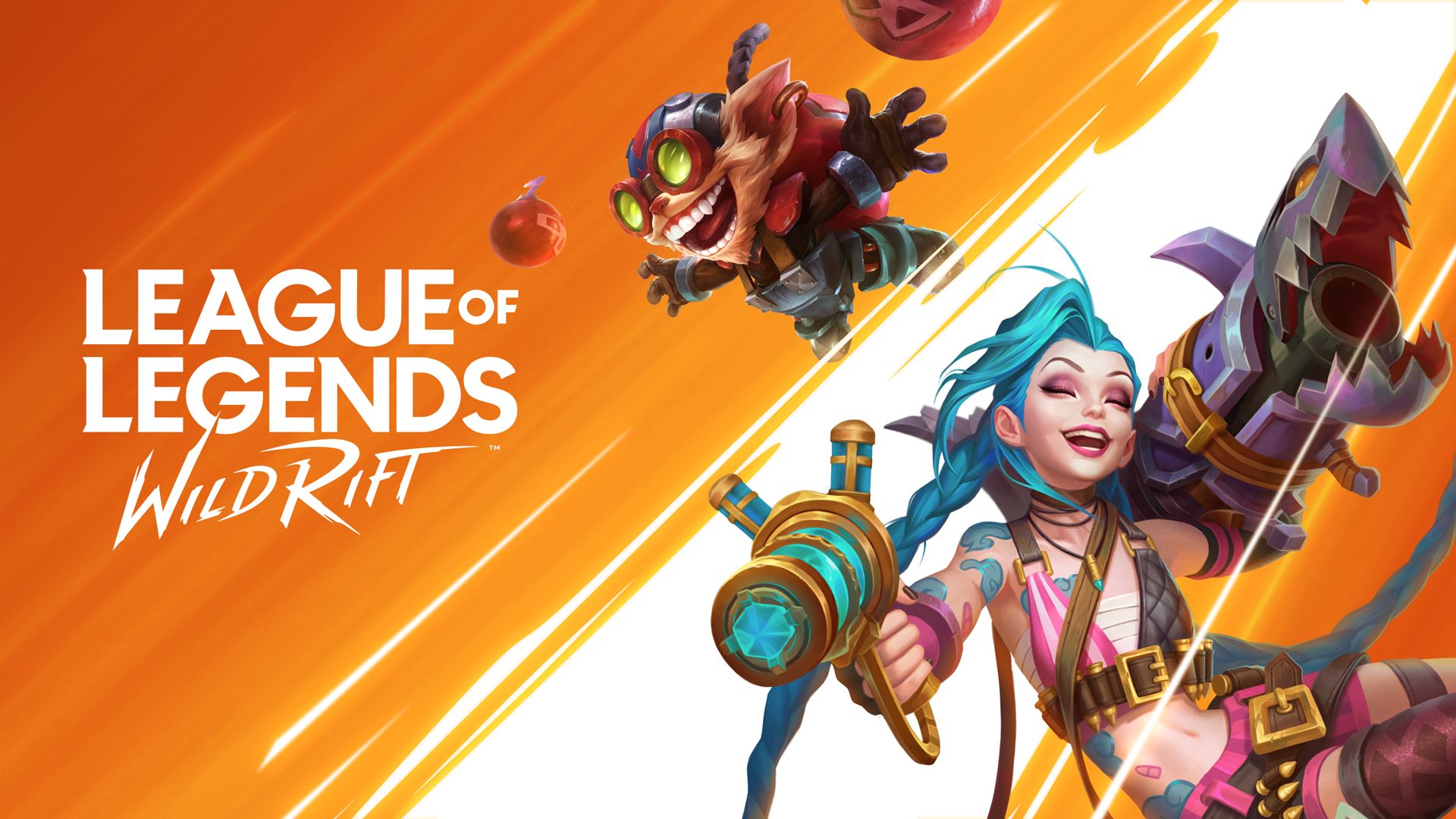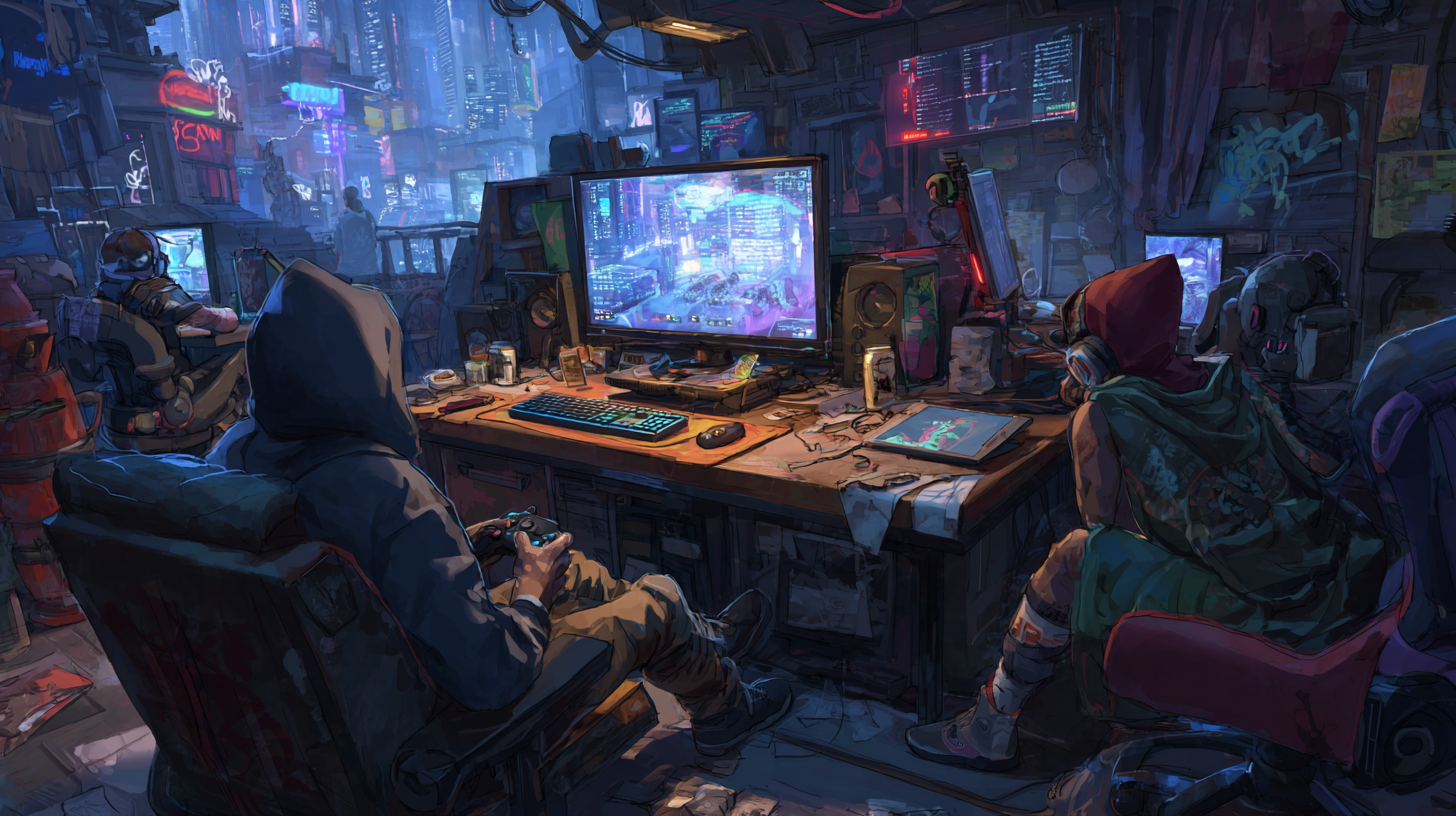You've got 15 minutes to squeeze in a ranked match on your phone. You queue up, hoping for teammates who understand their roles and communicate effectively. But which mobile MOBA actually delivers better teammates: League of Legends: Wild Rift or Mobile Legends: Bang Bang?
Both games dominate the mobile MOBA space, but their approaches to matchmaking, ranking systems, and team finding couldn't be more different. If you're serious about climbing ranks or building a competitive squad, understanding these differences is crucial for choosing where to invest your time.
Introduction
The mobile MOBA market has exploded, with Wild Rift and Mobile Legends leading the charge. While both offer fast-paced 5v5 action optimized for touchscreens, their matchmaking philosophies diverge significantly. Wild Rift brings Riot's proven ranked system from League of Legends PC, while Mobile Legends has refined its own approach over seven years of mobile-first development.
After analyzing player data, community feedback, and testing both systems extensively across different ranks, we've identified the key differences that actually matter for team finding and competitive progression. Whether you're a veteran MOBA player or new to mobile competitive gaming, this comparison will help you make an informed choice.
While finding compatible teammates can be challenging in either game, platforms like Jynx are making it easier with AI-powered matchmaking that works across mobile games, helping you connect with players who match your schedule and playstyle.
Player Base and Queue Times
The foundation of any matchmaking system is the player population feeding it.
Regional Dominance Patterns
Mobile Legends has maintained a massive player base across Southeast Asia, particularly in Indonesia, Philippines, and Malaysia. This translates to:
- Instant queue times in SEA regions (under 30 seconds)
- Highly competitive meta development
- Region-specific tournaments and esports scenes
Wild Rift, launched later in 2020, has stronger presence in:
- North America and Europe
- Latin America (especially Brazil)
- Growing adoption in regions familiar with League of Legends
Queue Time Comparison by Rank
Mobile Legends Queue Times:
- Warrior to Epic: 10-30 seconds
- Legend to Mythic: 30-60 seconds
- Mythical Glory: 1-3 minutes
Wild Rift Queue Times:
- Iron to Platinum: 30-90 seconds
- Emerald to Diamond: 1-2 minutes
- Master+: 2-5 minutes (varies by region)
The larger established player base in Mobile Legends generally means faster matches, especially in lower to mid-tier ranks. However, Wild Rift's growing population has steadily improved queue times since launch.
Peak Hours and Time Zone Matching
Mobile gaming's unique advantage is flexibility, but matchmaking quality still peaks during regional evening hours:
- Mobile Legends: Strong 24/7 queues in SEA
- Wild Rift: More pronounced peak/off-peak variations
For players with unconventional schedules, Mobile Legends currently offers more consistent matchmaking outside prime time.
Ranking Systems Compared
How you climb (or fall) differs dramatically between these games.
Tier Structure Breakdown
Mobile Legends Ranking:
- Warrior → Elite → Master → Grandmaster → Epic → Legend → Mythic → Mythical Glory
- Stars within each tier (3-5 stars to advance)
- Protection cards prevent rank drops
- Season rewards based on highest rank achieved
Wild Rift Ranking:
- Iron → Bronze → Silver → Gold → Platinum → Emerald → Diamond → Master → Grandmaster → Challenger
- Four divisions within each tier (IV to I)
- Demotion protection at tier boundaries
- LP (League Points) system for Master+
Wild Rift's system mirrors PC League of Legends, making it familiar for MOBA veterans. Mobile Legends uses a more forgiving star-based progression that feels faster initially but compresses heavily at higher ranks.
Matchmaking Rating (MMR) Transparency
This is where the systems diverge philosophically:
Wild Rift uses a hidden MMR system separate from visible rank:
- Your displayed rank may not reflect true skill level
- Helps balance teams across rank disparities
- Can lead to confusing mixed-rank lobbies
- More accurate long-term skill assessment
Mobile Legends more closely ties visible rank to matchmaking:
- What you see is closer to what you get
- Rank feels more directly earned
- Less confusion about lobby composition
- Faster feedback on performance
Promotion and Demotion Mechanics
Mobile Legends Protection Systems:
- Protection cards prevent star loss
- Credit score system affects matchmaking priority
- Brave points for fighting back from deficits
- More forgiving to inconsistent performance
Wild Rift Promotion Requirements:
- Best-of-five series for tier promotions
- Demotion shields at tier boundaries
- More punishing to losing streaks
- Clearer skill gates between tiers
Mobile Legends' forgiveness makes ranking up feel more accessible, while Wild Rift demands more consistent performance to climb. Your preference depends on whether you value fast progression or meaningful rank validation.
Team Finding and Communication
Solo queue is one thing, but finding consistent teammates is where mobile MOBAs really differ.
Built-in Team Features
Mobile Legends Offers:
- Squad system (up to 5 players)
- Squad chat and invites
- Squad-specific achievements
- In-game team recruitment
- Guild/clan system for larger communities
Wild Rift Provides:
- Party system (standard pre-made groups)
- Guild system with rewards
- Voice chat built-in
- Friend activity feed
- Less developed clan features
Mobile Legends has invested heavily in social features, making it easier to find and maintain gaming groups directly in-app. Wild Rift relies more on external platforms like Discord for team coordination.
Voice Communication Quality
Both games offer voice chat, but implementation differs:
Mobile Legends:
- Often requires third-party apps (Discord) for quality
- In-game voice chat variable quality
- Ping system well-developed as alternative
Wild Rift:
- Higher quality built-in voice
- Better integration with party system
- More players actually use in-game voice
For serious team play, both communities still prefer Discord or platform-specific solutions for voice communication.
Community Toxicity Levels
Mobile gaming's accessibility is both strength and weakness:
Mobile Legends:
- Larger casual player base
- More variable teammate quality in ranked
- Credit score system helps filter toxic players
- Report system effective but reactive
Wild Rift:
- Higher proportion of MOBA-experienced players
- Riot's established behavior systems
- Similar toxicity to LoL PC in some regions
- More structured penalty escalation
This is exactly why AI-powered matchmaking is revolutionizing how gamers connect – it takes personality compatibility and communication style into account automatically, matching you with players who maintain positive attitudes even during tough matches.
Role Queue and Champion Selection
How you secure your preferred role shapes your entire experience.
Role Selection Systems
Mobile Legends:
- Pick your preferred role before queue
- No guarantee you'll get it
- First-pick advantage in draft
- Frequent role conflicts
- Tank/support often unpopular
Wild Rift:
- Select two preferred roles before queue
- Higher chance of role assignment
- Autofill when queue times extend
- More structured role distribution
Wild Rift's position preference system, borrowed from League PC, generally delivers more consistent role experiences. Mobile Legends' free-for-all approach means faster queues but more pre-game negotiation.
Draft Phase Coordination
Mobile Legends Draft:
- Blind pick in lower ranks
- Draft pick in higher ranks
- Ban phase limited
- Faster overall process
- Less strategic depth
Wild Rift Draft:
- Draft pick starts at Emerald
- More extensive ban phase
- Longer strategic planning
- Mirrors competitive MOBA drafting
- Team composition matters more
For players who enjoy the strategic layer of drafting, Wild Rift offers more depth. Mobile Legends prioritizes speed, getting you into matches faster.
Meta Knowledge Requirements
Mobile Legends Meta:
- Frequent hero releases and adjustments
- Faster meta shifts
- More emphasis on hero mastery
- Strong hero counters matter
Wild Rift Meta:
- Slower, more deliberate patches
- Meta influenced by LoL PC
- Team composition emphasis
- More transferable MOBA knowledge
If you're building a team, Wild Rift's slower meta evolution gives more time to develop strategies. Mobile Legends rewards adaptability and staying current with rapid changes.
Competitive Team Building
Finding teammates is one challenge; building lasting teams is another.
Skill Verification
Mobile Legends:
- Rank displayed prominently
- Hero mastery visible
- Win rates public
- Match history accessible
- Easier to verify teammate credentials
Wild Rift:
- Similar transparency
- Import from LoL PC possible
- Champion mastery system
- Detailed match history
Both games provide decent tools for vetting potential teammates, though Mobile Legends' longer history means more established reputation systems within communities.
Practice and Scrimmage Options
Mobile Legends:
- Custom games available
- Training mode for mechanics
- AI matches for warm-up
- Limited structured practice tools
Wild Rift:
- Practice tool for mechanics
- Custom matches
- AI games with difficulty settings
- More robust practice environment
For serious teams wanting to develop strategies, Wild Rift offers better practice infrastructure. Mobile Legends teams rely more on ranked experience.
Tournament and Competitive Pathways
Mobile Legends:
- Established esports ecosystem
- Regional tournaments abundant
- Easier amateur team entry
- More developed competitive infrastructure
Wild Rift:
- Growing esports scene
- Riot backing provides legitimacy
- Icons and Horizon Cup
- Still building grassroots pathways
Mobile Legends has a seven-year head start on competitive infrastructure, making it easier for aspiring teams to find tournaments and prove themselves.
Ready to find your perfect mobile gaming squad? Jynx's AI matchmaking analyzes playstyle, skill level, and personality to connect you with compatible teammates who share your competitive goals – whether you're grinding Wild Rift or dominating Mobile Legends.
Which Game for Finding Teammates?
The verdict depends on your priorities.
Choose Mobile Legends If You:
- Play primarily in Southeast Asia
- Want faster queue times
- Prefer established team-finding communities
- Value quick progression feedback
- Enjoy frequent meta changes
- Want more developed in-game social features
- Are interested in established esports scenes
Choose Wild Rift If You:
- Play in NA, EU, or LATAM
- Have PC MOBA experience
- Prefer structured role queues
- Want deeper strategic drafting
- Value slower, more predictable meta
- Prefer Riot's behavior systems
- Want higher quality built-in voice chat
The Hybrid Approach
Many serious mobile MOBA players maintain accounts in both games, leveraging:
- Different regional communities
- Varied playstyle requirements
- Diverse competitive opportunities
- Cross-game skill development
With platforms that support multi-game profiles, you can find teammates for both Wild Rift and Mobile Legends without managing separate communities for each game.
How Jynx Helps Mobile MOBA Players
Finding compatible teammates in mobile MOBAs presents unique challenges that Jynx specifically addresses:
Schedule Matching for Mobile Sessions: Mobile gamers often have fragmented schedules – lunch breaks, commutes, evening sessions. Jynx's schedule matching connects you with players who game during your available windows, whether that's 30-minute lunch sessions or weekend marathons.
Cross-Game Mobile Profiles: Many players enjoy both Wild Rift and Mobile Legends. Jynx lets you maintain a unified gaming profile showing experience across multiple mobile titles, making it easier to find versatile teammates who can queue either game.
Quick Session Matching: Mobile gaming is built around quick sessions. Jynx's "auto-match" feature helps you find teammates fast when you've got 20 minutes to play, without the friction of posting in Discord LFG channels.
Communication Style Compatibility: Mobile voice chat limitations make communication compatibility crucial. Jynx's AI considers how players prefer to communicate – pings vs voice, detailed calls vs simple commands – matching you with teammates whose style complements yours.
The platform's mobile-first design recognizes that mobile MOBA players need team-finding solutions as quick and accessible as the games themselves.
Conclusion
Both Wild Rift and Mobile Legends offer compelling matchmaking experiences, but they serve different player needs. Mobile Legends excels in player population, social features, and established competitive infrastructure, particularly in Southeast Asia. Wild Rift delivers more structured role queues, strategic depth, and quality-of-life systems inherited from League of Legends PC.
For team finding specifically, Mobile Legends currently has the edge in built-in social features and community size in most regions. However, Wild Rift's superior role queue and voice systems make coordinating with teammates you've already found more pleasant.
The best choice depends on your region, schedule, and competitive goals. Regardless of which game you choose, modern matchmaking platforms can help you find compatible teammates who match not just your rank, but your playstyle, schedule, and communication preferences.
Download Jynx today and discover how AI can help you find the perfect mobile MOBA teammates in minutes – players who queue when you queue, communicate how you communicate, and share your competitive mindset.
Frequently Asked Questions
Q: Can I find teammates who play both Wild Rift and Mobile Legends? A: Yes, many mobile MOBA players maintain accounts in both games. Platforms with multi-game support make it easy to find versatile teammates who can queue either title based on mood or meta preferences.
Q: Which game has less toxic players? A: Both games struggle with toxicity typical of competitive MOBAs. Wild Rift benefits from Riot's established behavior systems, while Mobile Legends' credit score system filters repeat offenders. Finding pre-made teammates dramatically improves experience in either game.
Q: Do queue times really matter for team finding? A: Yes – faster queue times in Mobile Legends mean your team can play more matches per session. However, Wild Rift's role queue often delivers better role distribution, reducing pre-game friction with teammates.
Q: Which game is better for casual team play? A: Mobile Legends' faster progression and more forgiving ranking system make it friendlier for casual teams. Wild Rift demands more consistent performance, which can be frustrating for groups with varying commitment levels.
Q: How important is regional player base for mobile MOBAs? A: Critical – playing on a server with low population leads to long queues and mismatched ranks. Check which game dominates your region before committing to team building. Mobile Legends dominates SEA; Wild Rift has stronger Western presence.



